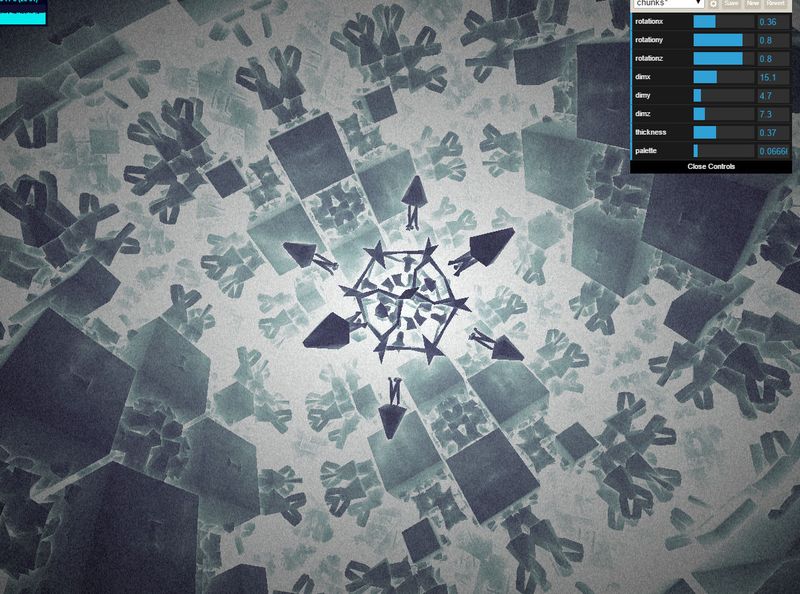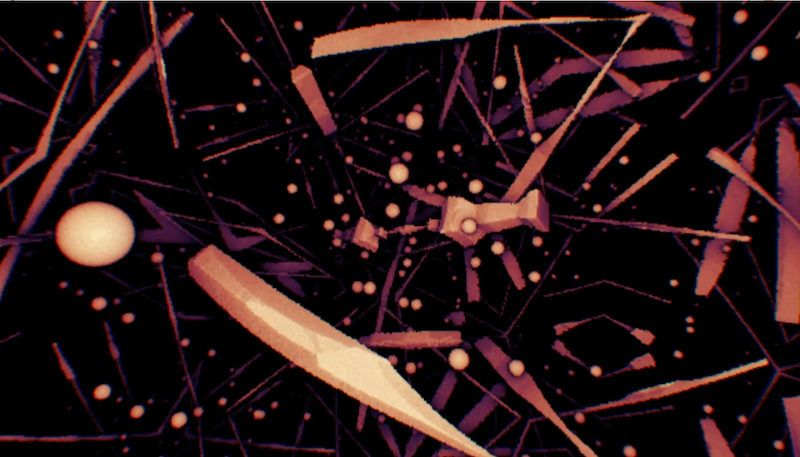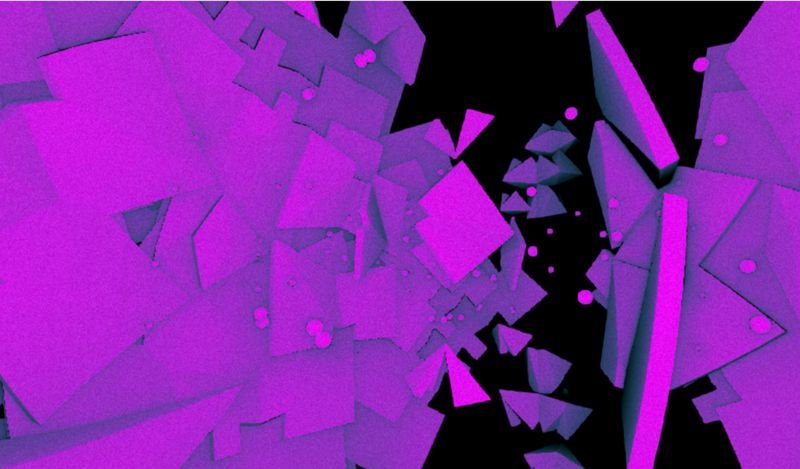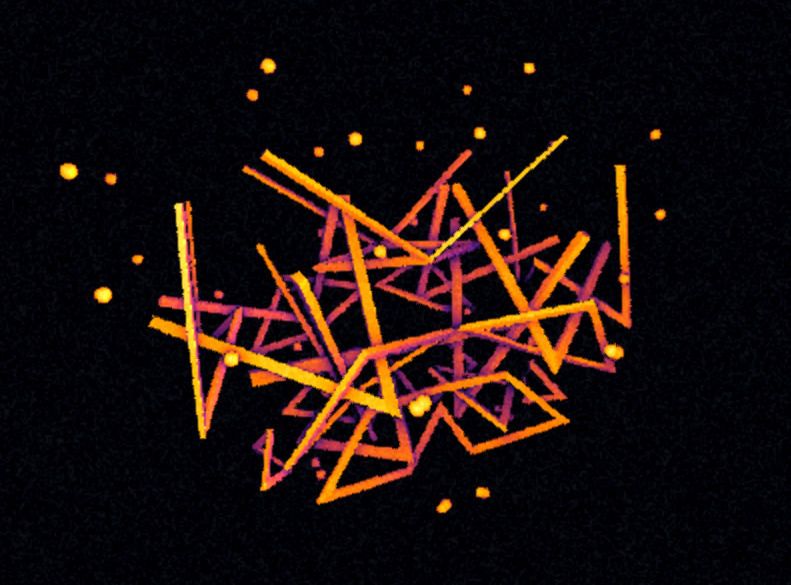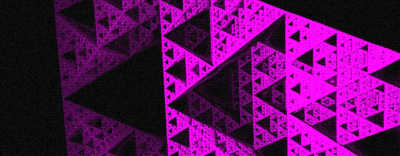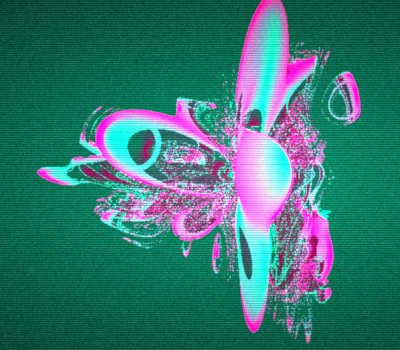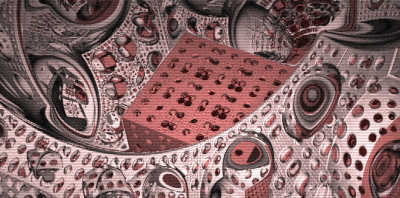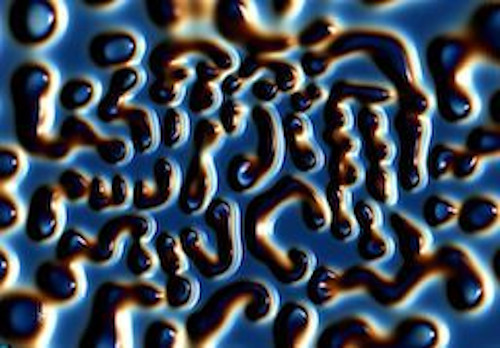Oct 2016
webgl audio-reactive iterative function system



Live Demo here play it some music with a beat and it should start dancing [ broken ]
while being a TA at Gray Area I worked on a fractal installation that I wanted to be educational.
Background
I had been working with Raymarched Distance Fields for about a year and found a few cool techniques I was happy with:
-
raymarching at half-res for performance
-
doing filtering at full res
-
adding noise
-
simulating wide-angle lens distortion
-
shading based only on iteration count indxing into colormaps
So I had sort of found a style. I wanted to learn other types of 3D fractals, and start developing my own.
Greetz 2:
Goals

I think that most fractal artists don’t attempt to explain anything about how the fractal is constructed, which is a shame!
To me, the coolest part about fractals is how crazy simple they are - how chaos can grow from simple rules. I believe this says something profound about our universe and how things don’t need to be “designed” to be super complex!
So I created a custom KIFS shader and exposed the parameters of translation and rotation to an iPad’s gyroscope, as well as the number of levels and number of mirrors.
My favorite KIFS I found is making the primitives long skinnies, and then adding a scale factor in between each iteration. Most others I had seen either didn’t scale, or scaled down. I like scaling up because it gives you these huge environments that seem to go out forever, instead of giving infinite tiny detail.
scaling down

scaling up
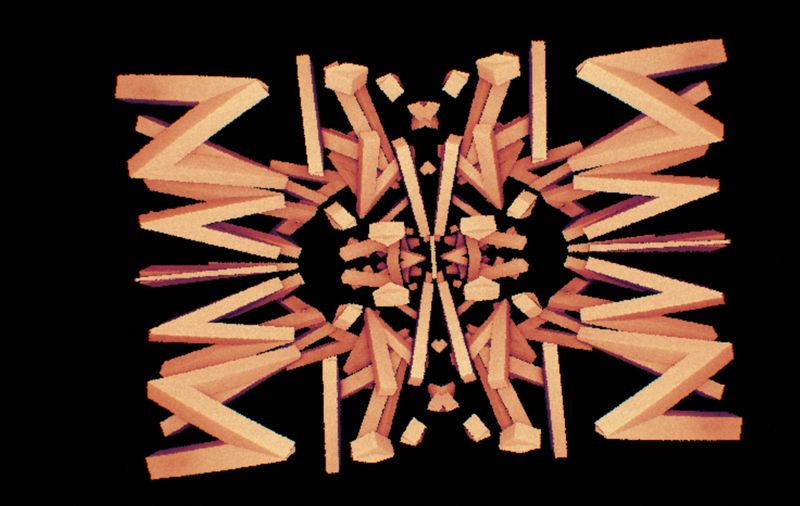
In the interactive version, you can still try out both kinds of scales.
The whole thing can be simplified in terms of the math / programming by just creating a 4x4 matrix transform which represents the iteration transform. This contains scale, and 3 dimensional rotation and translation. The scale could also be 3 dimentional, but haven’t tried that yet. I use homogenous coordinates here to make the scaling and translation and rotation into a 4D matrix multiplication. This can be computed on CPU side so the shader doesn’t have to do a ton of redundant sin and cos
uniform mat4 iterationTranform
...
float DE(vec3 p)
{
vec4 p_homo = vec3(p, 1.0);
float distance = 0.0;
for ( int i = 0; i < iterationCount; i ++)
{
p_homo = iterationTransform * p_homo;
p_homo = mirrorFunction(p_homo);
distance = min(primitive(p_homo.xyz), distance);
}
return distance;
}
Audio Reactivity & Interactivity
Again, using the fantastic ThreeAudio.js from Acko. Doesn’t seem to be under development anymore, but I find the beat detection and FFT analysis much better than the stock WebAudio FFT.

For an interactive installtion, I wanted to focus on 3D controls, since this is a 3D system. I wanted to communicate the idea that the iteration transform is composed of a translation, rotation and mirrors.
So, the Gyro of the iOS device controls rotation, if ROTATION is selected. And the same with TRANSLATION, which is a bit weird because people aren’t used to orientation corresponding to a translation. Maybe a better way would be to integrate the accelorometer to get the movement, but this could be very noisy. Sill needs some development.
Also wanted to get a way to change the iteration count to show the levels of complexity. So I made this quick UI in TouchOSC. It communicates with a node server serving the page, and Websockets the data into the page in realtime. It’s really super fast, I had doubts, but it looks like OSC + node + websockets could actually be a legit way to do low-latency audiovisuals. Will definitely work on this some more.
Exhibitions
I showed this at the Gray Area Creative Coding Immersive Showcase for ffall 2016, where I was a TA







